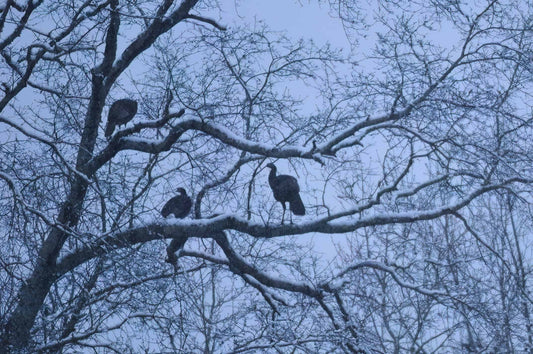White Oak Conservation: Essential for Thriving Wild Turkey Populations

White oak trees, iconic giants of North America's forests, play a critical role in sustaining vibrant wild turkey populations. Recognizing the intricate connection between these trees and turkey survival underscores the importance of proactive conservation efforts.
The Connection Between White Oaks and Wild Turkeys
White oaks produce acorns, a vital food source rich in nutrients for turkeys, particularly during autumn and winter when other foods are scarce. Acorns provide high-energy sustenance necessary for turkeys to build fat reserves, helping them survive harsh winter conditions. White oak acorns are preferred due to their lower tannin levels compared to other oak species, making them more digestible and nutritious for wildlife.
Habitat and Ecosystem Benefits
Beyond acorns, white oaks create crucial habitat structures. Mature white oaks offer roosting sites, nesting opportunities, and shelter from predators and adverse weather. Their broad canopies moderate forest microclimates, creating diverse understory vegetation, essential for nesting hens and poult cover.
Threats to White Oak Populations
Despite their significance, white oaks face increasing threats. Urban development, deforestation, invasive pests, diseases, and climate change pose substantial risks. White oak regeneration is further hindered by poor forest management practices, which can lead to dense canopies and insufficient sunlight for oak seedlings to grow effectively.
Conservation Efforts and Strategies
Conserving white oak forests requires active management strategies including selective harvesting, controlled burns, and removal of competing invasive species. These techniques open forest canopies, promoting healthy regeneration and ensuring sustained acorn production.
Organizations, landowners, and wildlife managers increasingly collaborate to establish conservation programs focused specifically on oak habitats. Education initiatives highlight the ecological significance of white oaks, fostering community support for sustainable forestry practices.
Benefits Beyond Wild Turkeys
Preserving white oaks doesn't just benefit turkeys. It enhances overall biodiversity, supporting a myriad of wildlife, from deer and squirrels to numerous bird species. Healthy oak ecosystems also contribute to improved air and water quality, carbon sequestration, and soil stabilization.
Conclusion
The conservation of white oak trees is intrinsically tied to the health and prosperity of wild turkey populations. By prioritizing sustainable management and conservation practices, we protect these magnificent trees, ensuring that wild turkeys and diverse wildlife continue to thrive in our forests for generations to come.


